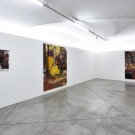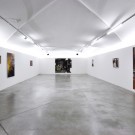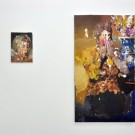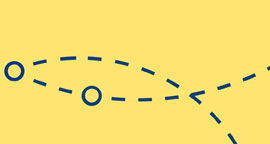Centre for Contemporary Culture at Palazzo Strozzi
Palazzo Strozzi
Adrian Ghenie

Pie Fight Study 18/2/12, 2012
Olio su tela / Oil on canvas
55,8 x 76 cm
The Sander Collection, Darmstadt
Photo courtesy l’artista / the artist and The Pace Gallery London
Warning: A non-numeric value encountered in /var/www/vhosts/strozzina.org/httpdocs/admin/wp-content/plugins/lightbox-gallery/lightbox-gallery.php on line 443
- Adrian Ghenie, Dr. Josef, 2011
Olio su tela / Oil on canvas, 64 x 70 cm Collezione privata , UK / Private collection, UK
- Adrian Ghenie
Pie Fight Study 5/7/12, 2012 Collage e olio su tela / Collage and oil on canvas 42 x 30 cm Courtesy l’artista e / the artist and The Pace Gallery
- Adrian Ghenie
Pie Fight Interior, 2012 Olio su tela / Oil on canvas 208,9 x 161,2 cm Courtesy l’artista e / the artist and The Pace Gallery
- Adrian Ghenie
Pie Fight Interior, 2012 Olio su tela / Oil on canvas Courtesy l’artista e / the artist and The Pace Gallery
- Adrian Ghenie
Exhibition view "Francis Bacon and the Existential Condition in Contemporary Art" CCC Strozzina, Firenze © photo Martino Margheri
- Adrian Ghenie
Exhibition view "Francis Bacon and the Existential Condition in Contemporary Art" CCC Strozzina, Firenze © photo Martino Margheri
- Adrian Ghenie
Exhibition view "Francis Bacon and the Existential Condition in Contemporary Art" CCC Strozzina, Firenze © photo Martino Margheri
- Adrian Ghenie
Exhibition view "Francis Bacon and the Existential Condition in Contemporary Art" CCC Strozzina, Firenze © photo Martino Margheri
- Adrian Ghenie
Exhibition view "Francis Bacon and the Existential Condition in Contemporary Art" CCC Strozzina, Firenze © photo Martino Margheri
- Adrian Ghenie
Exhibition view "Francis Bacon and the Existential Condition in Contemporary Art" CCC Strozzina, Firenze © photo Martino Margheri
- Adrian Ghenie
Exhibition view "Francis Bacon and the Existential Condition in Contemporary Art" CCC Strozzina, Firenze © photo Martino Margheri
- Adrian Ghenie
Exhibition view "Francis Bacon and the Existential Condition in Contemporary Art" CCC Strozzina, Firenze © photo Martino Margheri
- Adrian Ghenie
Exhibition view "Francis Bacon and the Existential Condition in Contemporary Art" CCC Strozzina, Firenze © photo Martino Margheri
Adrian Ghenie’s paintings are never furtive documentations of reality but complex constructions that require lengthy decodification on the part of the observer. Catalogues, history books, stills from films or images from archives and databases on the internet are the various sources from which the artist draws his models, which are subsequently assembled and juxtaposed.
One of his most distinctive traits is the modified representation of celebrated figures of great dictatorships of the 20th century. These figures are recovered only to be denied, through the pictorial elaboration, the historical authority they have acquired in the collective imagination. He takes as a model, for example, photographs of Adolf Hitler and his companion Eva Braun in the summer residence of Berghof, images of Doctor Josef Mengele or the father of the atomic bomb Julius Robert Oppenheimer. The artist cancels the features of the faces and focuses our attention on the appearance of the interiors in which the figures are located, pursuing a strategy of “visual subtraction” that often renders the original images almost unrecognizable.
In the work The Devil (2010) the interiors represented refer to a common repertoire of images of bourgeois interiors, with elements like the sofa, wallpaper or clothes that call to mind collective memories of environments typical of past generations. The calm tranquillity of intimate private places is destroyed as soon as we become aware of the subjects represented: the estranging familiarity of ordinary places generates ideas and impulses with enormous destructive potential.
Often Ghenie’s works involve a direct clash between what appears on the surface and an implicit meaning when the visual dimension is accompanied by a knowledge of the subject. As the artist himself says, the images documenting our past are often lacking in clarity and materialness due to techniques of visual reproduction like the drawing or the photograph that produce a flat, two-dimensional picture.
Apart from some emblematic exceptions, like Self Portrait as a Monkey (2011), Ghenie excludes the possibility of an opening of the pictorial space towards an imaginative field outside the work, working particularly on two main elements: the subject’s gaze, which is often concealed, and the background, which never opens to a further view.
In the Pie Fights series Ghenie takes as his subject stills from silent films of the 1920s, based on the use of stereotyped comical scenes such as slipping on a banana skin or a fight that begins or finishes with a custard pie in the face. The stills taken as a model are those in which the actor’s face is covered in the pie custard and is no longer recognizable, the culmination of the ridiculing of the person who in the films invariably removes the custard from his eyes and gazes at the camera, arousing the pity and at the same time the hilarity of the viewer.
The decontextualization from the narrative flow of the original film transforms the meaning of the image from a light comic moment to the stigmatization of these figures as victims of an aggression, emphasizing their desperate loss of power and dignity. The face, the element that most distinguishes and identifies a person, melts, leaving the individual anonymous in a gesture of silent alienation. This tension emerges through polarities like abstract and figurative expression, the subtraction and additional of pictorial material, cultured references and popular elements. Ghenie’s pictorial virtuosity in realism is overcome apparently in a destructive act, arriving at a paradoxical “denied expression” directed at the creation of allegories of inner states, metaphors of fading certainties.
BIOGRAPHY
Adrian Ghenie (1977, Baia-Mare, Romania; lives and works between Cluj and Berlin), creates materially rich paintings that re-elaborate motifs and figures of the collective imagination. Graduating in 2003 at the Cluj University of Art and Design, in 2005 he was co-founder, together with Mihai Pop, of the Plan B Gallery, a venue entirely dedicated to contemporary art which became the epicentre of the artistic tendencies and research of Cluj. His works are characterized by a combination of the artist’s personal memories and elements and themes drawn from the most heterogeneous sources such as books, films and archives. His works can be found in the public collections of the Museum of Contemporary Art (MOCA) and the Hammer Museum, both in Los Angeles, as well as in the San Francisco Museum of Modern Art (SFMOMA). Works by the artist are also present in Belgium, in the collections of the S.M.A.K. in Ghent and at the Museum van Hedendaagse Kunst Antwerpen (MuHKA) in Antwerp. In the summer of 2009 Hatje Cantz Verlag published the first complete monograph on Adrian Ghenie. Ghenie has held several monographic and collective exhibitions at an international level. Noteworthy among his personal shows are the exhibition of 2006 at the Mihai Nicodim Gallery in Los Angeles, the one held at the Haunch of Venison in Zurich in 2007, the exhibition at the Tim Van Laere Gallery in Antwerp, Belgium (2008), as well as those in 2009 at the National Museum of Contemporary Art in Bucharest, Romania, or at the Haunch of Venison in London. In 2010 personal shows were also held at the Stedelijk Museum voor Actuele Kunst in Ghent (S.M.A.K.) and, again, at the Mihai Nicodim Gallery in Los Angeles, while in 2011 he staged monographic exhibitions at the Haunch of Venison in London and at the Tim Van Laere Gallery in Antwerp. A big solo show, the first one in an American museum, is planned for the autumn 2012 at the Museum of Contemporary Art in Denver, Colorado. His collective exhibitions include: (2006) Drive Slowly Through Our Land, Mihai Nicodim Gallery, Los Angeles; (2006) Cluj Connection, Haunch of Venison, Zurich; (2007) Galerie Rüdiger Schöttle, Munich; (2007) Expanded Painting 2, Prague Biennale 3; (2008) Liverpool Biennale; Days Become Nights, Galerie Hussenot, Paris; (2009) Drawings and Other Works on Paper, Tim Van Laere Gallery, Antwerp; Expanded Painting 3 – Staging the Grey, Prague Biennale 4; The Punishment of Lust and Luxury, Mihai Nicodim Gallery, Los Angeles; I Watered a Horseshoe as if It Were a Flower, Mihai Nicodim Gallery, Los Angeles; (2011) Communism Never Happened, Charim Galerie, Vienna; The World Belongs to You, Palazzo Grassi – Francois Pinault Foundation, Venice; Just Another Brick in the Wall, Barbara Seiler Galerie, Zurich; (2012) European Travellers, Mücsarnok Kunsthalle, Budapest.
« back to exhibition
Francis Bacon and the Existential Condition in Contemporary Art
ARTISTS
CATALOGUE AUTHORS
| M | T | W | T | F | S | S |
|---|---|---|---|---|---|---|
| « Jun | ||||||
| 1 | 2 | 3 | 4 | 5 | 6 | |
| 7 | 8 | 9 | 10 | 11 | 12 | 13 |
| 14 | 15 | 16 | 17 | 18 | 19 | 20 |
| 21 | 22 | 23 | 24 | 25 | 26 | 27 |
| 28 | 29 | 30 | 31 | |||



















